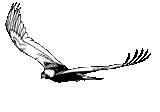
Scottish Raptor Study Group
Monitoring and conserving Scotland's birds of prey
Argyll Raptor Study Group
The Argyll Raptor Study Group held its first meeting in 1993. It formed when a nucleus of experienced raptor workers met in Inveraray to unite under a single banner to combine resources and knowledge and improve monitoring effort as a whole. Its members are enthusiasts first and foremost, their primary goals being to monitor their birds, participate in national surveys and identify real and potential threats as they arise. Data collected are passed on to the Raptor Monitoring Officer and ultimately to Scottish Natural Heritage to assist in formulating policies affecting raptors.
Argyll covers c. 6397km², stretching from Glencoe in the north to the Mull of Kintyre in the south and from the islands of Coll and Tiree in the west to Loch Lomond in the east. Approximately 31% of this area is covered by commercial plantation forestry and much of the remainder is open deer forest. The terrain rises from sea level to c.1150m with high and precipitous mountains in the north and more fertile, gentler ground in the south. Islands such as Mull, Colonsay and Bute add to the diversity of habitats.
Argyll has nine regular breeding species of diurnal raptor and four species of owl. The group runs long term nest box projects for barn owl and tawny owl. With such a large area and a number of islands and a comparatively small membership, population estimates are best based on national survey results (when additional fieldworkers are involved) or from intensive single species studies. Typically, 85 hen harrier sites are monitored, 67 golden eagle sites and 31 peregrine sites. Up to 27 osprey sites are checked annually along with more than 150 buzzards and over 100 ravens. Mull, of course, holds the core white-tailed eagle population and the group helps to monitor the expansion of its range in Argyll and Bute.
The group is always looking for new members (especially on Islay, Mull, Jura & North Argyll), who will usually have some amateur or professional ornithological background. For those who are inexperienced, we can usually offer mentoring and an 'apprenticeship' period of assessment which usually leads to full membership. We have two meetings per year in the spring & autumn. Raptor study can be immensely satisfying for those individuals with patience, time and the love of wild places and the birds that inhabit them.
Chair: David Warden
About us•
Argyll•
Central•
Dumfries & Galloway•
Lewis & Harris•
Highland
Lothian & Borders•
North East•
Orkney•
South Strathclyde•
Tayside•
Uists